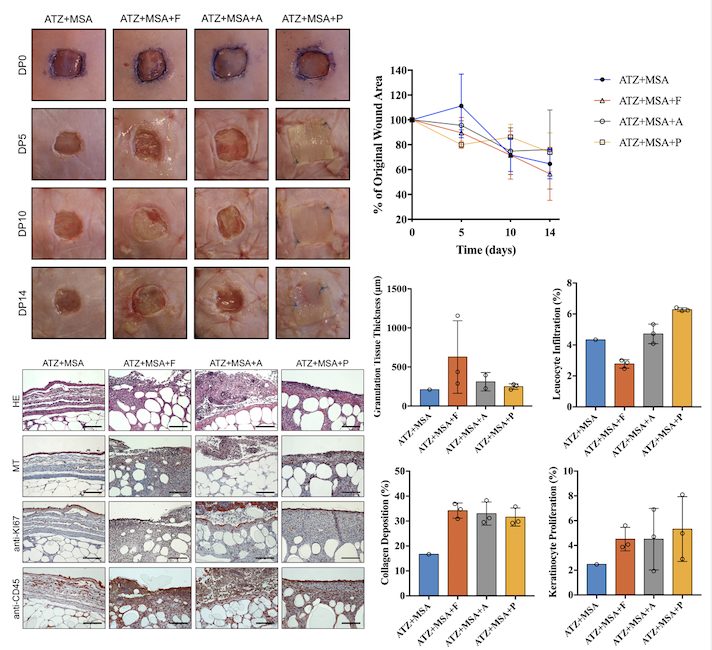Efficacy of Therapeutics Tested on a Novel Oxidative Stress Murine Chronic Wound Model
Adriana C. Panayi, M.D., Mengfan Wu, MD, PhD, Qinxin Liu, MD, PhD, Mehran Karvar, MD, Ryoko Hamaguchi, BS, Shimpo Aoki, MD, Chenhao Ma, MD, Yori Endo, MD, Dennis P. Orgill, MD, PhD.
Brigham and Women's Hospital, Boston, MA, USA.
BACKGROUND: Investigators have struggled to produce a reliable chronic wound model. We modified the dosage and administration of an antioxidant enzyme inhibitor regimen to reduce mortality, while inducing a chronic wound environment. We used this model to test different therapies.
METHODS: 1x1 cm2 full thickness skin wounds were excised on the dorsum of 10 db/db mice. To induce a chronic wound, we applied catalase (ATZ; intraperitoneal 0.5 g/kg) and glutathione peroxidase (MSA; topical 300 mg/kg) inhibitors. A cohort of these mice was treated with fat grafting (ATZ+MSA+F), an amniotic membrane scaffold (ATZ+MSA+A) or a fetal bovine dermis scaffold (ATZ+MSA+P). All groups were compared to untreated mice (ATZ+MSA). Wounds were photographed on Day 0, Day 5, Day 10 and Day 14 post-surgery. On Day 14 all animals were sacrificed and wound tissue was harvested for histological analysis.
RESULTS: This study successfully induced a chronic wound in 11-week-old db/db mice, with no animal deaths. The wound healing rate in the ATZ+MSA+A and ATZ+MSA+P groups was slower and the ATZ+MSA+F faster than the untreated mouse. The three treated groups showed higher granulation tissue formation, collagen deposition and keratinocyte proliferation than the untreated mouse. Leucocyte infiltration was lowest in ATZ+MSA+F group.
CONCLUSIONS: Overall, the antioxidant enzyme inhibitors arrested the wounds in the inflammatory stage of healing. The fat grafting method showed the most potential, increasing the rate of wound healing and the thickness of granulation tissue, while limiting leucocyte infiltration and improving keratinocyte proliferation. This may be instrumental for developing new wound therapeutics. 
Back to 2020 Abstracts
